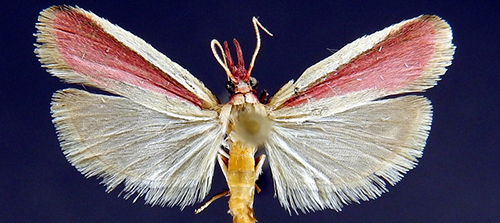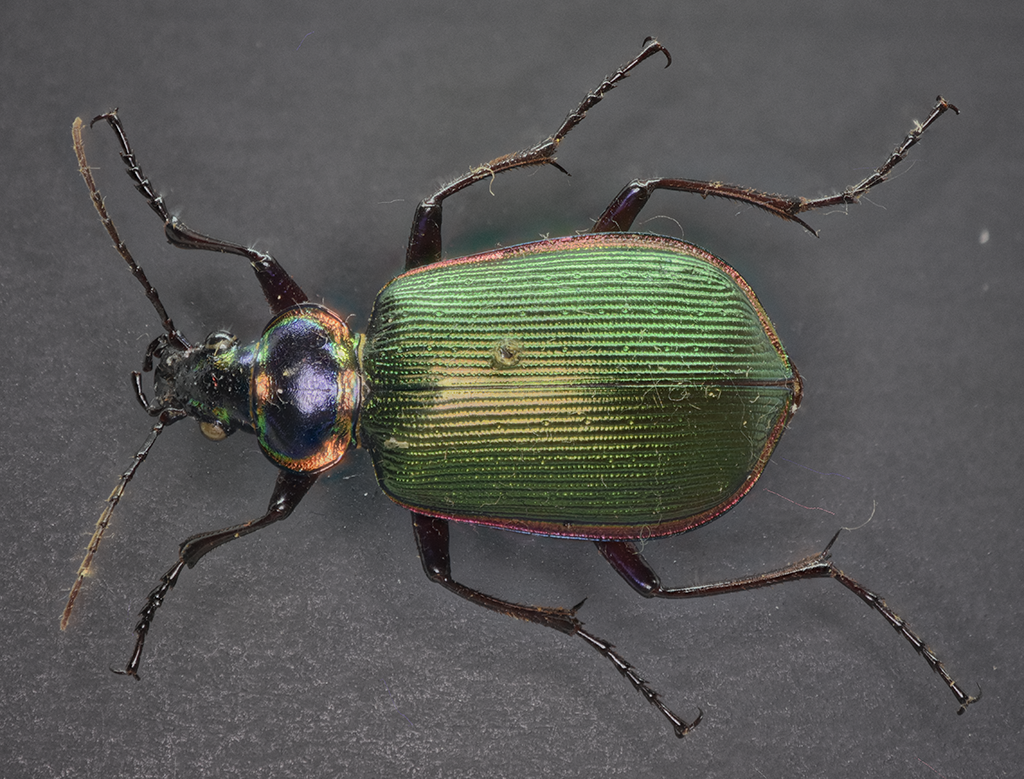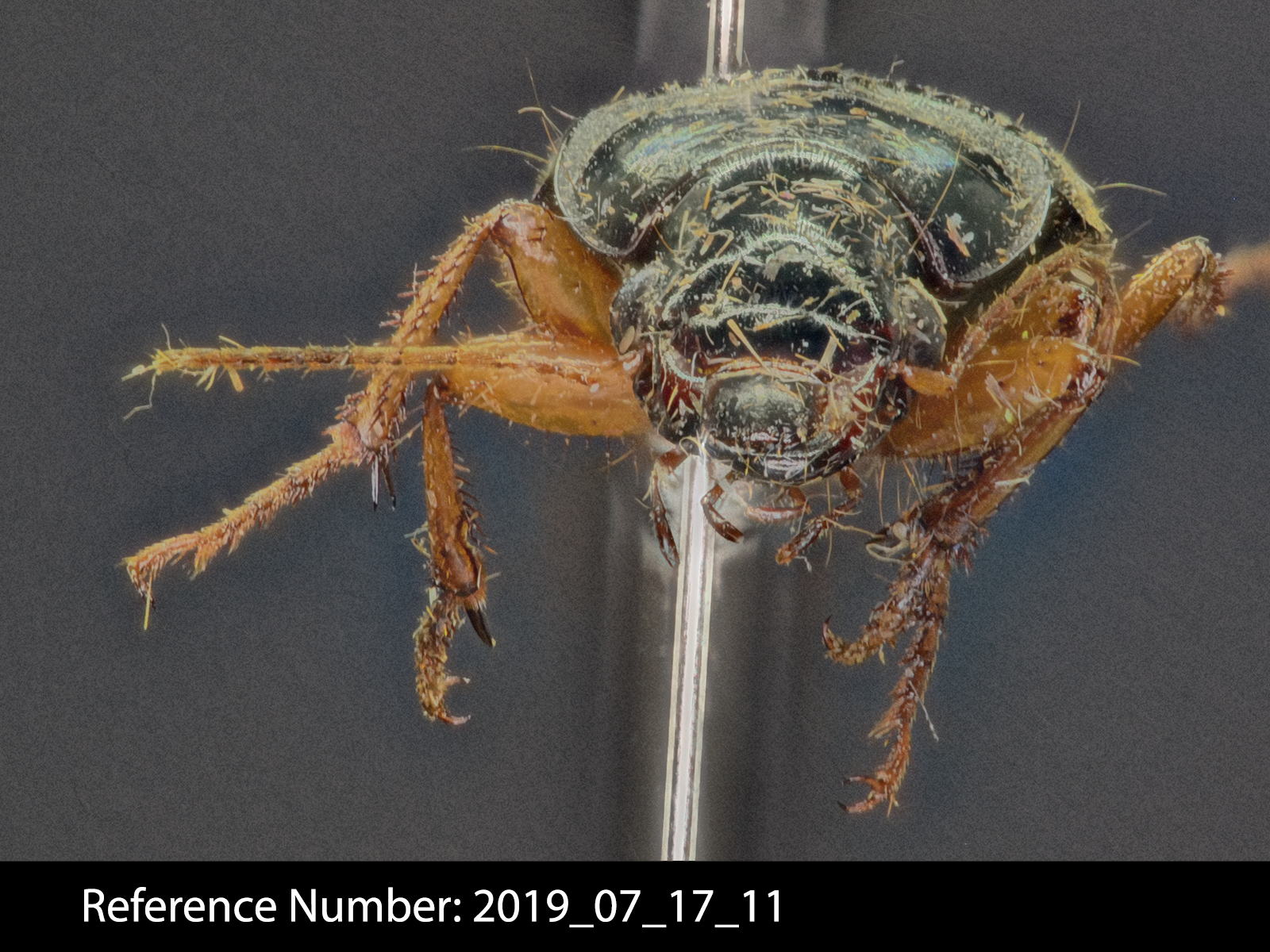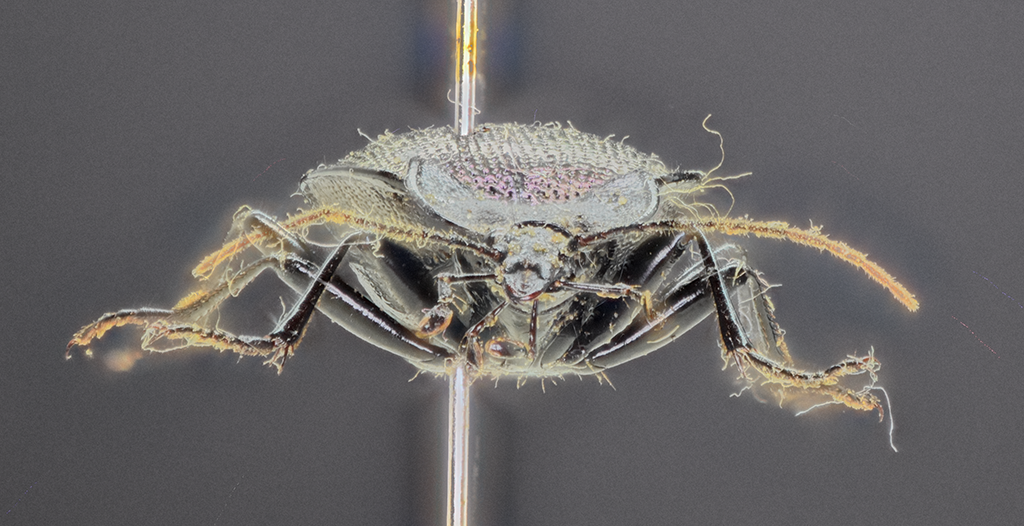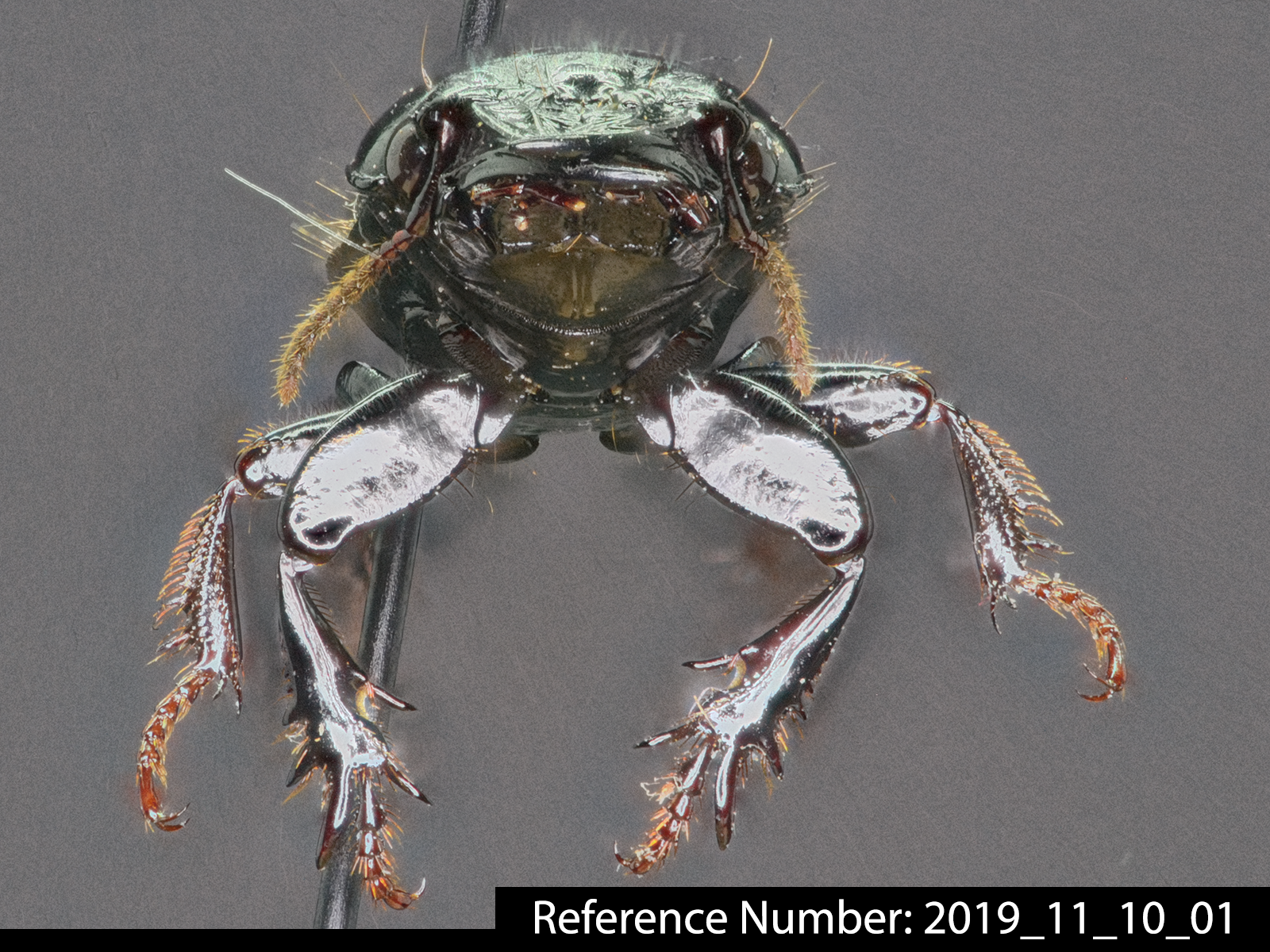COLEOPTERA: Carabidae
Members of the family Carabidae are often called ground beetles. There are over 40,000 species known worldwide; over 2,000 of these are found in North America.
Tiger beetles are sometimes included with this family. However, we reciognize them as a separate family.
Click/ tap on any of the images to view a larger version of the photo. Please respect that all these photos are copyrighted. Do not use them for any purpose without first contacting us (there is a contact form on our main page for this site).
Calosoma scrutator (Fabricius, 1775). The common name of this species is caterpillar hunter.
This beetle is relatively common across much of North America. Adults often excrete a foul smelling oil when handled (smells like rancid olive oil). This specimen was collected by our former member Gordon Adams in Peoria County in 1964.
As their common name implies, adults and larvae prey on caterpillars (often Noctuidae and Geometridae). The life cycle is one year, but some adults have been observed overwintering and may live up to three years. Adults are attracted to lights at night, but do not frequently fly. They have been recorded climbing trees and shrubs in search of prey.
Eggs are laid individually during early summar months. They hatch within 3 – 15 days (depending on temperature). Larvae develop through three instars. It can take about one month before pupation. The pupal stage is passed in an earthen cavity constructed by the final instar larva. Yes, adults readily bite. Wonder how I know that?
Patrobus longicornis (Say, 1823). This species is known from Illinois and Indiana (among other states). It is often associated with wet or moist habitats. Adults are often attracted to lights a night. This specimen was collected by Mark DuBois in Peoria Co., Illinois.
Scaphinotus elevatus (Fabricius, 1787). There are 6 recognized subspecies in North America. Commonly called the eastern snail eater, adults of this species will also eat slugs. The narrow head allows the adult to eat every last morsel from the snail shell. Adults are most active at night and are flightless. Larvae feed on soil arthropods. Thought you might enjoy this handsome beetle. It seems to be encountered less frequently these days (another argument against raking leaves in your yard in the autumn). This specimen was collected by our former member, Gordon Adams, in Peoria County in August, 1971.
